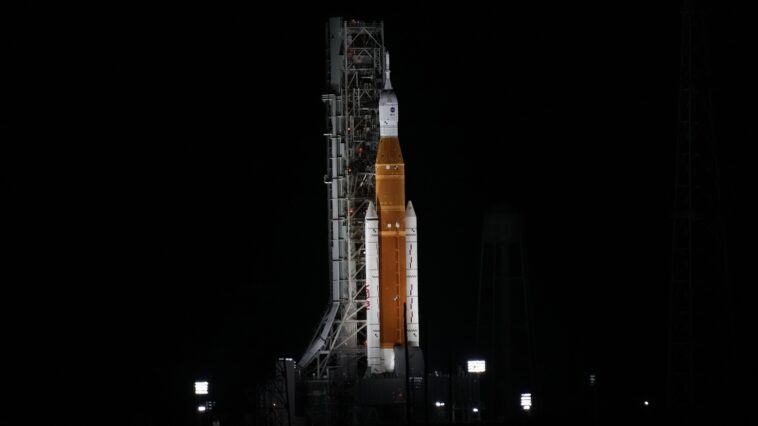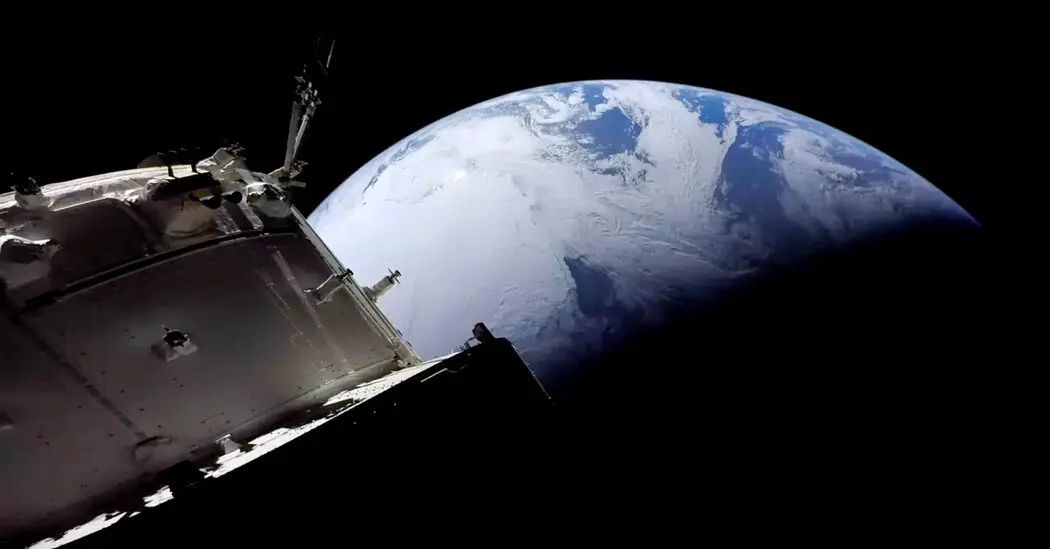Engineers are attempting to correct yet another issue while NASA’s enormous moon rocket waits on its launch site in Florida. The agency decided against launching Artemis I on Saturday, missing the launch window for the second time. As evidence of NASA’s mastery of publicity throughout the course of six decades in spaceflight, look no further than the enormous media coverage surrounding the debut of the James Webb Space Telescope’s images.
Prior to exploding in a shower of liquid hydrogen, the planned launch of Artemis attracted interest from all across the globe. Undoubtedly, large rockets are cool. The goal of space exploration is to inspire. But … I worry sometimes that all the excitement and motivation may prevent us from seeing humanity’s aspirations for space exploration more critically.
When examined critically, the history of space since our 1969 moon landing is one of the lost possibilities, unrealized promise, and intense frustration. Even Artemis, a political invention that is years behind schedule and billions of dollars over budget, simply promises to return us to a previous location.
I can’t find my hoverboard
Astrophysicist Paul Davies says in Cosmos, “When Neil Armstrong took that first little stride on the moon, it was generally hailed as the starting step on a ladder to the stars.” The future of interplanetary, much alone intergalactic, travel seems dismal after half a century with mankind presumably trapped in low-Earth orbit.
The last time that humans departed the moon was on December 14, 1972, only a few days before Christmas. Twelve humans walked on the moon’s light surface during the sixth and last mission, Apollo 17, which took place in 1972. The moon landings must have looked at the time to be simply the first hesitant steps into the solar system; after Mars, it would be only a short hop to other planets.
In fact, NASA’s 1950s plan was coming together. Step 1: Enter the void. Create a reusable spacecraft in step two to significantly reduce the cost of departing Earth. Step 3: Construct a space station with this spacecraft. Step 4: From there, launch a spacecraft to other worlds.
It was mapped by NASA. By 1976, there should be a 100-person space station, a manned lunar outpost, and people on Mars by the 1980s. What took place? The expense of going to Mars alarmed US President Nixon, who halted the whole effort. The Space Shuttle, a reusable spacecraft, was the last piece in NASA’s blueprint for reaching the stars.
Since then, we’ve taken the wrong direction. The Space Shuttle, a vehicle that could only go beyond Earth orbit, took the position of the Apollo program. After a number of mishaps and financial cutbacks, the Shuttle was decommissioned, and for many years, the US—still the world’s leading space power—was unable to put people into orbit at all.
The shuttle turned out to be an expensive detour from the human space program’s primary objective of reaching other planets.
Reusability was crucial for enabling travel to other planets, as NASA was aware. Technically, the Shuttle might be used again. However, the average cost of each flight was $1.5 billion, and the time between flights was months (in comparison, Artemis launches cost $4.1 billion, and the next one is slated for 2024).
I think the Space Shuttle is an amazing engineering achievement. But it delayed backspace research for 30 years, and that is something I detest, said Adam Gilmour, co-founder of Australia’s Gilmour Space, to me last year. Even NASA concurs with this. The head of NASA said in 2005 that “it was not the appropriate approach. It is now widely agreed.”
Another NASA administrator said in 2007 that “the majority of the next 15 years will be spent restoring capabilities we formerly had, and abandoned.”
According to a 2009 analysis, NASA’s core technical infrastructure, which supports its capacity to go to space, has mostly deteriorated. It had been years since the US had even attempted to develop a brand-new rocket booster, the key component of space flight.
Artemis
So now we come to Artemis, which is perched on its launch pad. Two components make up the mission: the Space Launch System rocket and the Orion spacecraft. If you gaze at Artemis long enough, it can begin to appear rather familiar. flanked by two white thrusters and a big orange body. Where else have we come across that? The Space Shuttle, of course.
Interestingly, Artemis is constructed from Space Shuttle-era components, which explains why. The solid-fuel rocket boosters and main engines are re-used (the white rockets on the flanks). In 1998, the first engine flew. According to space.com, the oldest booster side component had its maiden flight in 1984, and it was used on the disastrous Columbia shuttle, whose explosive disintegration in 2003 effectively terminated the shuttle program.
Why utilize second-hand designs? Because that is what you get when a rocket is constructed by politicians rather than NASA. NASA announced a new strategy for space exploration in 2009: retire the Space Shuttle, make significant investments in cutting-edge technology, and establish new business alliances (with organizations like Elon Musk’s SpaceX).
However, dozens of contractors from different US states worked together to construct the Space Shuttle, and lawmakers from those states reacted angrily to the prospect of job losses brought on by NASA’s new approach. So they enacted laws ordering NASA to spend Shuttle contracts to develop the Space Launch System, a large new rocket (SLS).
Although it is sometimes claimed that a shortage of financing has hampered our space objectives, Congress has actually spent more on the SLS than NASA had asked for. The fiercest opponent of space travel, Eric Berger, claims that Congress “drafted the rocket’s authorization to guarantee that its favored contractors, like Boeing and Northrop Grumman, received major pieces of the action.”
The project’s budget has now ballooned out of control, which is fortunate for the contractors. NASA has been able to go back in time because of the SLS’s theft of energy and resources. The SLS rocket, according to Berger, “is just about the worst thing to happen to NASA in the previous six decades” in part because of its opportunity costs and retrograde mindset.
The Age of Musk
At the moment, Elon Musk is struggling. That may be done to a person’s reputation by an unsuccessful attempt to purchase Twitter, declining to get the COVID-19 vaccination, and, oh, being sued for supposedly operating a Dogecoin pyramid scheme. But Musk is significant because SpaceX, his rocket business, is carrying out some fascinating activities in space.
The most notable of them is Starship, a completely reusable rocket intended to transport humans to Mars. It can be launched repeatedly and is more potent and less expensive than the SLS.
And unlike some of Musk’s previous plans, prototype 15 actually took flight and landed last year. SpaceX has already launched 45 rockets this year, demonstrating Musk’s track record of success in orbit. Our prospects of visiting other planets would greatly increase if he is successful in pulling off his final trick with Starship.
Source: SMH




